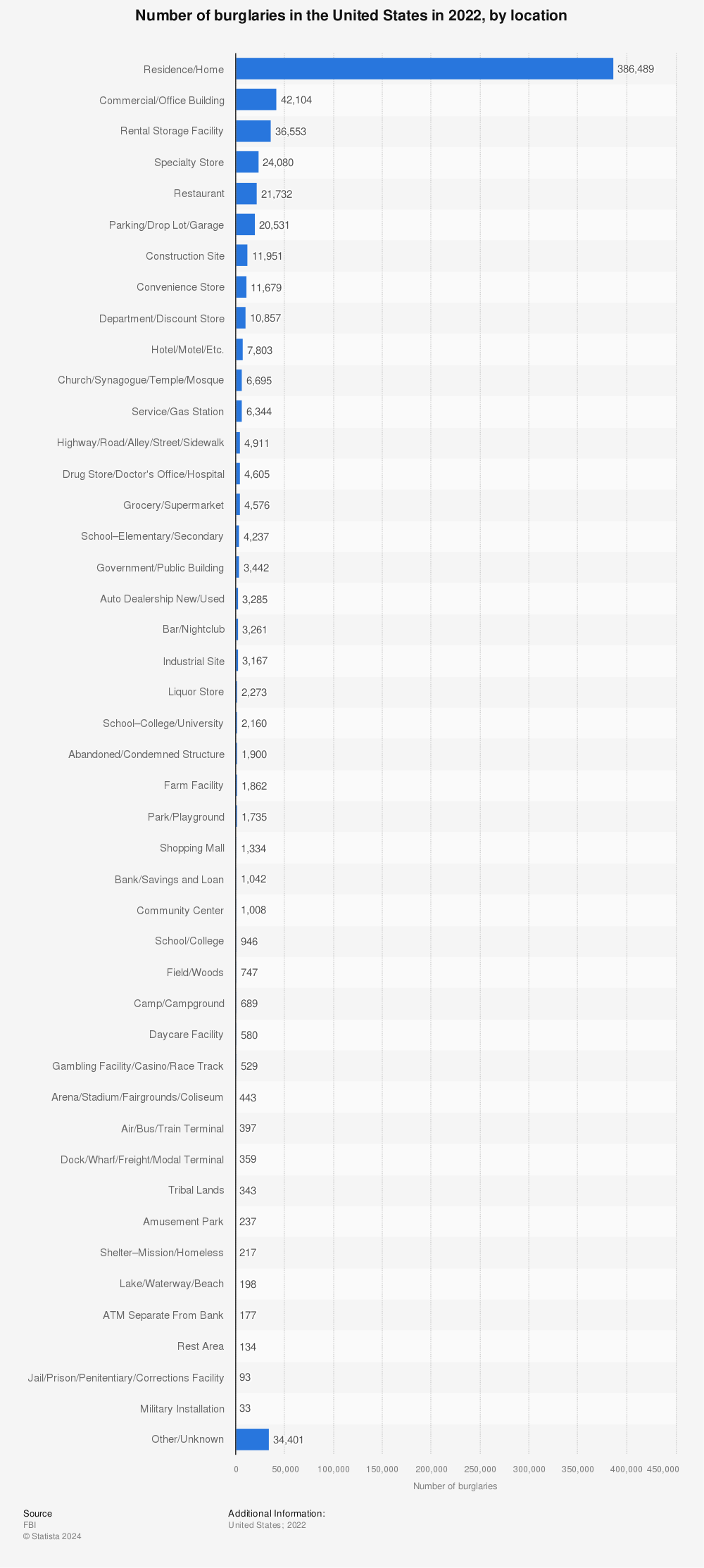Increases in construction site theft are making builder’s risk insurance increasingly vital to protect employees, property, and stakeholder interests. In 2022, there were nearly 12,000 incidents in the United States alone, surpassing both convenience stores and department stores as a more common target for theft. Together, these incidents cost the industry an estimated $1 billion every year.

Most construction companies take proactive measures to reduce the risk of theft, like installing surveillance cameras, fences, and locks. But at the end of the day, there’s no substitute for insuring against the risk of theft. Enter builder’s risk insurance.
What is builder’s risk insurance?
Builder’s risk insurance, also known as course of construction insurance, is a type of property insurance that provides coverage for buildings under construction. It’s essential for anyone undertaking construction projects, as it provides financial protection against risks, including theft, vandalism, and damage from natural disasters. Without builder’s risk insurance coverage, individuals or companies could face significant financial losses due to unforeseen events during the construction process.
What builder’s risk insurance covers
Coverage can vary from carrier to carrier, and policies are often customizable to address project-specific risks. Project owners should work closely with providers to ensure all risks are covered.
Policies typically provide comprehensive coverage for a wide range of exposures including:

- Fire and water damage
- Some weather-related damages (rain, wind, hail)
- Theft and vandalism
- Transit and off-site storage
- General liability (injuries to non-workers)
- Structural collapse
- Testing
What builder’s risk insurance does not cover
It’s important to know what is not typically covered by builder’s risk insurance. Policies typically do not cover:

- Normal wear and tear (for equipment and materials)
- Employee theft
- Professional liability (such as accidents – these are covered by liability insurance)
- Contractual liabilities
- Mechanical breakdown
- Earthquakes and landslides
- Governmental action
- Soft costs (costs related to delays such as lost revenue, taxes, and loans)
What is a “reasonable security” clause?
Nearly all insurance policies include a “reasonable security” clause. This clause is a requirement from the provider that project owners take proactive measures to reduce the risk of incidents like theft, vandalism, and fire damage.
The good news is that when you meet these requirements (or go above and beyond), you often can get a lower premium on your policy. Not to mention, proactively preventing incidents will ensure you don’t have to open any claims, so you can keep your premium low.
Common reasonable security requirements include:
- Site security (such as fencing and locks)
- Fire prevention measures (extinguishers and alarm systems)
- Surveillance systems (security cameras with talkdown, and battery backup systems)
- Real-time monitoring
- Proper material storage and weather protection
- Emergency response plans
- Compliance
Each provider will require different risk-mitigation measures. However, regardless of the provider’s requirements, taking proactive measures to secure and surveil your jobsite will result in saving money and time, reducing the risk of injury and theft, and achieving better project outcomes.
What should I consider when opening an insurance policy?
Finding the right provider and plan
Finding the right policy is about assessing project needs, understanding coverage nuances, and researching providers. To start, you should investigate working with a variety of providers to choose the policy that best fits the risks that you expect to face throughout the project.
Cost
Builder’s risk insurance will typically cost between 1% and 5% of a project’s budget. Of course, this price can vary depending on numerous factors such as estimated project timeline, quality of materials, and location. Like most insurance policies, non-project factors such as market conditions, deductibles, and limits can impact costs too.
Who should be covered?
Typically general contractors and project owners are the ones who purchase the insurance policy. That being said, the insurance will benefit anyone with a financial interest in the project, so most stakeholders will want to ensure they are included in the policy. This can be done through additional insured endorsements.
When to purchase builder’s risk insurance?
One last thing to note: it’s crucial to open your builder’s risk insurance policy before your project begins. Once the project is underway, you will no longer be able to insure it with builder’s risk.
How do I keep my rates low?
In recent years, builder’s risk insurance costs have gone up, in part due to rising rates of theft, vandalism, and fire damage. However, non-weather-related damages are often preventable with the right security precautions.
In general, high premiums are the result of increased risk–and each time you file a claim, your rate will increase.
So, what is the best way to keep your rates low? Proactive risk mitigation.
Top construction risk mitigation devices
Builder’s risk insurance providers reward companies who take action to mitigate risk. Multiple studies have shown that visible security cameras significantly reduce crime.
Thanks to advancements in jobsite security and construction surveillance technology, there are a variety of tools on the market that are both affordable and can greatly reduce your risk exposure. Some of the most effective solutions for construction site security are:
- High-definition construction site security cameras, with built-in security solutions like motion detection or construction time-lapse visuals for documented video surveillance.
- Fire detection systems with thermal imaging and heat mapping.
- Remote live monitoring systems for 24/7 security monitoring from anywhere in the world.
Mitigate risk with builder’s risk insurance & construction cameras
As theft, vandalism, and fire damage have increased in recent years, builder’s risk insurance has emerged as an important safeguard for project owners and investors. However, before taking out a builder’s risk insurance policy, it’s important to understand the nuances and requirements of the plan you’re considering.
While most policies will cover a variety of common risk exposures, it is equally important to invest in proactive risk mitigation such as construction site security cameras and construction video surveillance cameras. Project owners who take the proper actions to secure their jobsite against theft, vandalism, and damages, can ensure better builder’s risk insurance rates, and safer, more successful projects.

Ready to protect your next project? TrueShield, our all-in-one security solution, was designed specifically to address builder’s risk insurance requirements. Safeguard your site, investments, and peace of mind with advanced surveillance features tailored for construction.

